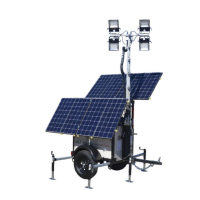10.3.7. State of charge always shows 100%
One reason could be that the negative cables going in and out of the battery monitor have been wired the wrong way around, see
Charge and discharge current are inverted
[51].
10.3.8. State of charge does not increase fast enough or too fast when charging
This can happen when the battery monitor thinks the battery is bigger or smaller than in reality. Check if the battery capacity [15]
has been set correctly.
10.3.9. Incorrect battery voltage reading
Check if there is an issue with the +B1 cable. Perhaps the fuse, the cable itself or one of the terminals is faulty or there is a loose
connection.
Check for incorrect wiring: the +B1 cable has to be connected to the positive of the battery bank, not midway of the battery bank.
In case a temperature sensor is used, make sure the sensor is connected to the positive terminal of the battery bank, not in the
middle of the battery bank.
10.3.10. Incorrect auxillary battery voltage reading
If the auxillary (starter) battery voltage is too low:
• Perhaps there is an issue with the +B2 cable, perhaps the fuse, the cable itself or one of the terminals is faulty, or there is a
loose connection.
If the auxillary (starter) battery voltage reading is missing:
• Make sure that both batteries share a common negative and that the starter battery negative is connected to the load side of
the battery monitor shunt. For instructions on how to correctly wire the starter battery, see Aux connection for monitoring the
voltage of a second battery [8].
10.3.11. Synchronisation issues
If the battery monitor does not synchronise automatically, one possibility could be that the battery never reaches a fully charged
state. Fully charge the battery and see if the state of charge eventually indicates 100%.
Another possibility is that the charged voltage setting [29] should be lowered and/or the tail current setting [29] should be
increased.
It is also possible that the battery monitor synchronises too early. This can happen in solar systems or in systems that have
fluctuating charge currents. If this is the case change the following settings:
• Increase the “charged voltage [29]" to slightly below the absorption charge voltage. For example: 14.2V in case of 14.4V
absorption voltage (for a 12V battery).
• Increase the “charged detection time [29]” and/or decrease the "tail current [29]" to prevent an early reset due to passing
clouds.
Manual - BMV-712 Smart
Page 53 Troubleshooting

